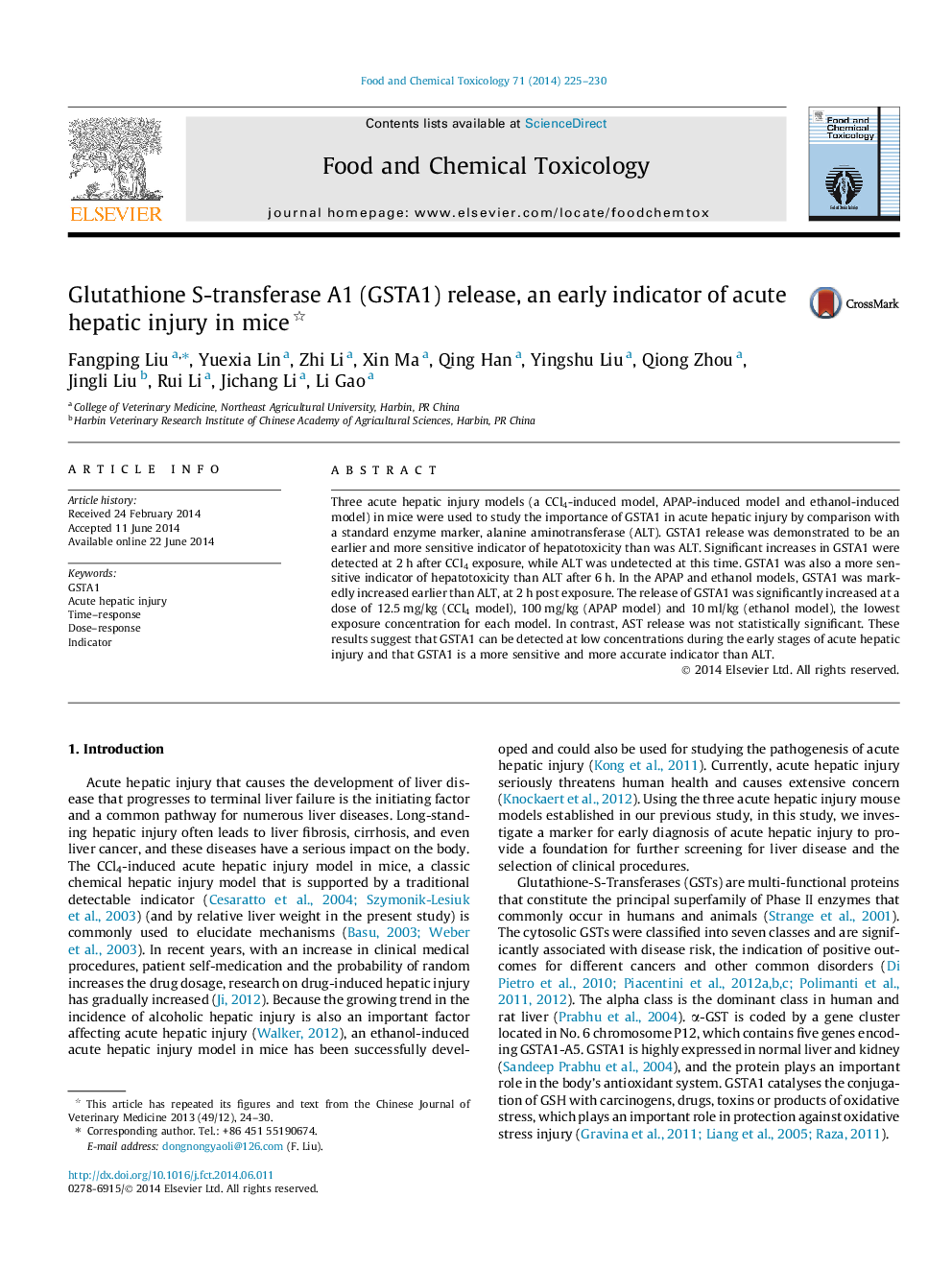| Article ID | Journal | Published Year | Pages | File Type |
|---|---|---|---|---|
| 5850122 | Food and Chemical Toxicology | 2014 | 6 Pages |
Abstract
Three acute hepatic injury models (a CCl4-induced model, APAP-induced model and ethanol-induced model) in mice were used to study the importance of GSTA1 in acute hepatic injury by comparison with a standard enzyme marker, alanine aminotransferase (ALT). GSTA1 release was demonstrated to be an earlier and more sensitive indicator of hepatotoxicity than was ALT. Significant increases in GSTA1 were detected at 2Â h after CCl4 exposure, while ALT was undetected at this time. GSTA1 was also a more sensitive indicator of hepatotoxicity than ALT after 6Â h. In the APAP and ethanol models, GSTA1 was markedly increased earlier than ALT, at 2Â h post exposure. The release of GSTA1 was significantly increased at a dose of 12.5Â mg/kg (CCl4 model), 100Â mg/kg (APAP model) and 10Â ml/kg (ethanol model), the lowest exposure concentration for each model. In contrast, AST release was not statistically significant. These results suggest that GSTA1 can be detected at low concentrations during the early stages of acute hepatic injury and that GSTA1 is a more sensitive and more accurate indicator than ALT.
Related Topics
Life Sciences
Agricultural and Biological Sciences
Food Science
Authors
Fangping Liu, Yuexia Lin, Zhi Li, Xin Ma, Qing Han, Yingshu Liu, Qiong Zhou, Jingli Liu, Rui Li, Jichang Li, Li Gao,
